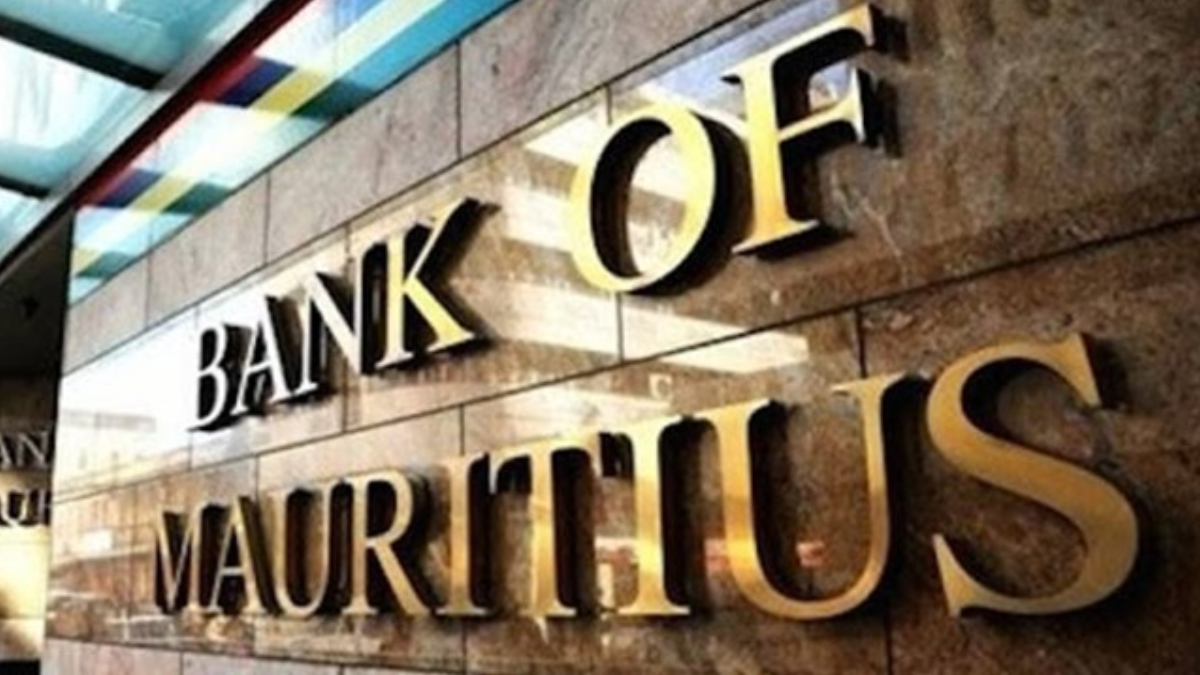News
Mauritian Rupee Depreciation’s Rough Ride

The Mauritian rupee has experienced a decline in value over the past 12 months, losing 1.7% against the US dollar, 4.7% against the British pound, and 5.3% against the euro, ending in February 2024.
This trend has continued into the current year, with the rupee slipping further against the dollar since the beginning of 2024.
The exchange rate between the dollar and the rupee has surpassed Rs 46, reaching Rs 46.69 on April 8th.
Harvesh Seegolam, the Governor of the Bank of Mauritius, has highlighted the central bank’s efforts to manage the structural liquidity excess in the banking system.
The Bank of Mauritius has issued two-year treasury bills totaling Rs 7 billion in order to absorb the excess liquidity.
These operations have significantly reduced the excess rupee liquidity to an average daily amount of Rs 3 billion from November 28, 2023, to March 28, 2024.
Additionally, the central bank has intervened in the foreign exchange market, absorbing a net amount of Rs 1.9 billion since the last monetary policy committee meeting.
Fazeel Soyfoo, Partner International Tax at Andersen, notes that the actions taken by the Bank of Mauritius in the foreign exchange market have influenced the value of the rupee.
He states that the interventions aimed to maintain the rupee’s value against the dollar, as opposed to being solely driven by market supply and demand dynamics.
According to him, a 1.7% depreciation of the rupee against the dollar can be deemed reasonable considering the central bank’s interventions.
The Central Bank observes that the rupee’s value continues to be affected by economic fundamentals, supply and demand dynamics, and international currency movements.
The outstanding amount of securities issued by the Bank of Mauritius to manage excess liquidity stood at Rs 133.4 billion on November 28, 2023, decreased to Rs 121.3 billion by the end of December 2023, and increased to Rs 138.4 billion by March 28, 2024, with more than 50% maturing within a year.
Overall, the depreciation of the Mauritian rupee against major currencies has implications for the banking sector and the wider economy, as the Central Bank continues to implement measures to stabilize the currency’s value and manage liquidity within the banking system.
Brian Ah-Chuen, Executive Director of ABC Banking Corporation, acknowledged the unfavorable trend of the rupee against the dollar since January.
The exchange rate moved from Rs 44.61 on January 3rd to Rs 44.21 on January 26th, before surpassing Rs 45 and reaching Rs 45.80 on February 6th.
According to Ah-Chuen, the exchange rate evolution is driven by market forces.
He noted that at the beginning of January, interventions from the Bank of Mauritius maintained a stable rupee and even strengthened it against the US dollar.
However, as demand remained persistent and central bank interventions became less frequent, the trend started to reverse.
Ah-Chuen added that the strengthening of the dollar on international markets, supported by the strength of the US economy and higher interest rates, also contributed to this shift.
He emphasized that banks heavily involved in foreign currency activities would benefit from the rupee’s depreciation as the value of their foreign currency assets increases.
However, this benefit could be countered by a tense national foreign exchange market with lower trading volumes and squeezed margins.
In terms of the foreign exchange market, data from the Bank of Mauritius showed a total turnover of $4.5 billion from November 28, 2023, to March 27, 2024, largely balanced between inflows and outflows.
The Central Bank had resumed its regular interventions in the foreign exchange market between September and early December 2023 to ensure an adequate supply of currencies, especially for importers stocking up for the year-end.
On April 1st, 2024, the Bank of Mauritius intervened in the domestic foreign exchange market by selling $5 million at a rate of Rs 46.40 per dollar to mitigate excessive exchange rate volatility.
Additionally, the Bank bought currencies from banks amounting to $7.8 million in December 2023.
Despite these interventions, the rupee-dollar exchange rate is approaching Rs 47. This raises concerns about potential further depreciation.
Fazeel Soyfoo emphasizes the need for clarity on the Central Bank’s readiness to act regarding the rupee’s further depreciation.
He warns that without intervention, the rupee could continue to slide. “The Bank continues to closely monitor the forex market to prevent any manipulation of exchange rates by unethical participants,” affirmed the governor.
Additionally, the new operational target, the weighted average interbank rate on a day-to-day basis, fluctuated between 3.10% and 3.15% from November 28, 2023, to March 28, 2024, nearing the lower limit of the interest rate corridor in the new monetary policy framework.
Shamin Sookia, Managing Director of Perigeum Capital, emphasizes the regulatory role in controlling the monetary system.
He notes that the depreciation of the rupee by 1.7% over the past twelve months, ending in February 2024, reflects the country’s economic fundamentals of supply and demand.
Sookia explains that the value of the rupee is influenced solely within Mauritius, with a depreciation requiring more rupees to purchase dollars – the key currency for commercial transactions.
During the pandemic, lower foreign currency inflows required importers to settle their import bills, affecting currency supply and demand.
Sookia also points out the inverse correlation between the dollar price and heavy oil prices, with a weakening dollar potentially leading to increased heavy oil prices despite being denominated in dollars.
Regarding recent exchange rate trends, the average dollar-rupee exchange rate was Rs 44.50 between September and December 2023, rising to Rs 45 in January 2024 and further to Rs 46 since February 2024.
On April 8th, the rate reached Rs 46.69, suggesting a potential shift towards a Rs 47 exchange rate. This raises concerns about a further depreciation of the rupee.
Sookia stresses the importance of the Bank of Mauritius in regulating the forex market and intervening to maintain stability.
Failure to do so could lead to forex market instability. A continuous appreciation of the dollar could impact import costs, potentially resulting in inflation.
The January 2024 trade deficit of Rs 13 billion, a 25.7% increase from the previous year, highlights the potential economic implications of exchange rate developments and trade imbalances.
Does the continued rupee depreciation weigh heavily on the import bill? The trade deficit must be analyzed over a certain period as there are temporal differences.
That being said, when the Mauritian currency loses value, more rupees will need to be spent to obtain the dollars necessary for imports.
However, a weak rupee benefits exporters and hotel operators. Their operating costs are charged in rupees, while the incoming currency is in foreign currencies.
Currency availability. Despite the intervention of the Bank of Mauritius in the forex market, it seems that currency availability is not smooth. “We still have the same problem. We cannot obtain the necessary amount to settle our import bill in one go,” laments an importer.
However, currency inflows have relatively improved compared to the situation just after the Covid-19 pandemic, as noted by Brian Ah-Chuen.
Volumes from the hotel and manufacturing sectors, especially those exporting to developed countries, have increased.
Therefore, according to him, the current situation cannot be deemed as a significant shortage of currencies. However, as he indicates, the context has not completely returned to normal.
“We still have periods of tension, such as during the year-end holidays when import demand reaches its peak.
We have also observed a decrease in the frequency of the Bank of Mauritius’ interventions in selling currencies in the market.
All these factors contribute to a certain tightening of the market, reflected in the dollar-rupee exchange rate,” he highlights.
What are the solutions to this situation?
In the short term, there may not be a miracle solution, at least according to Brian Ah-Chuen, as the problem is mainly structural.
However, in the medium term, adjusting our monetary policy with euro interest rates not excessively lower than dollar rates could be beneficial.
It is essential to consider our economic growth and avoid risking slowing it down.
In the long term, improving the trade balance through policy measures aimed at reducing imports and increasing exports will allow the country to accumulate more foreign exchange reserves.
Source: Defi Media











